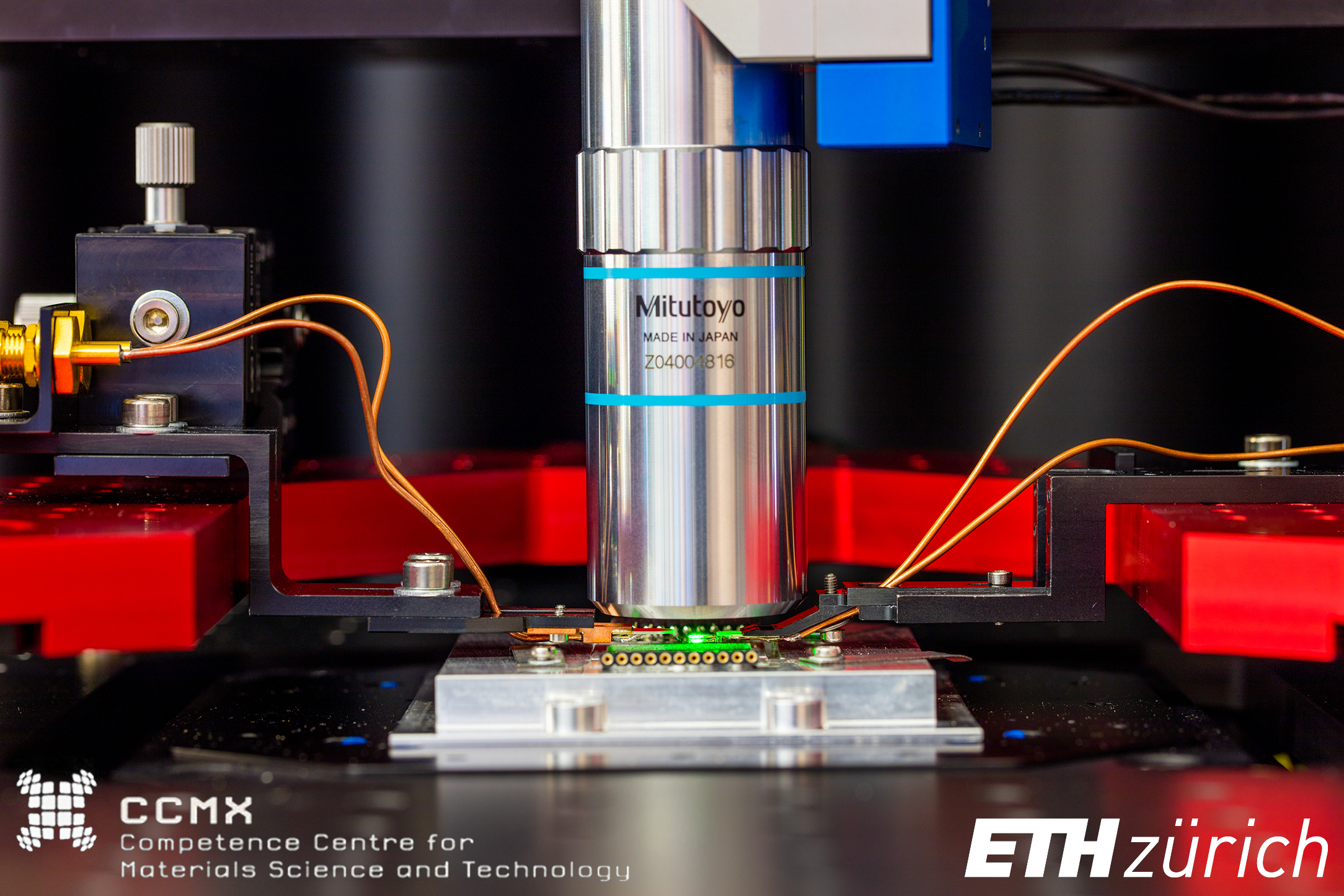Nanoscale Scanning Diamond Magnetometer

Supported by the Competence Centre for Materials Science and Technology (CCMX) and the Scientific Equipment Program of the ETH Zurich, the research groups of Prof. Pietro Gambardella and Prof. Christian Degen have installed a Nanoscale Scanning Diamond Magnetometer (NSDM) prototype instrument at ETH Zurich. The NSDM is a next generation scanning probe microscope that exploits quantum metrology to achieve very high sensitivities. NSDM’s are enabling a range of breakthroughs in the high-resolution and passive magnetic analysis of surfaces, such as antiferromagnetic, ferrimagnetic and multiferroic materials, two-dimensional ferromagnets, spin textures including domain walls and skyrmions, spintronic devices, as well as current flow in nanostructures.
The NSDM is a scanning probe microscope that utilizes a quantum object – a single magnetic impurity in a diamond probe tip – as an atomic size magnetic field sensor. This impurity, which is known as the nitrogen vacancy center (or external page NV center), can be detected by optical readout. The NSDM takes advantage of quantum control technique and quantum coherence to achieve very high magnetic field sensitivities and to access new modes of measurement, such as noise spectroscopy
Diamond-based quantum sensors have been investigated for about 10 years, and enabled significant advances in a number of scientific fields where high sensitivity and resolution are key, such as nanomagnetism and nuclear magnetic resonance. State-of-the-art NSDM instruments currently achieve a sensitivity of a few mT and a spatial resolution below 50 nm.
Further reading:
R. Schirhagl, K. Chang, M. Loretz, and C. L. Degen, Nitrogen-Vacancy Centers in Diamond: Nanoscale Sensors for Physics and Biology, external page Annual Reviews in Physical Chemistry 65, 83-105 (2014).
L. Rondin, J. P. Tetienne, T. Hingant, J. F. Roch, P. Maletinsky, and V. Jacques, Magnetometry with nitrogen-vacancy defects in diamond, external page Reports on Progress in Physics 77, 056503 (2014).
The NSDM relies on the interaction of the NV center with the magnetic field. As the magnetic field at the location of the NV center increases, the magnetic interaction becomes stronger – more energy is required to flip the magnetic orientation of the defect. This energy can be probed by the technique of electron paramagnetic resonance (EPR) spectroscopy. For this purpose, the NV center is exposed to microwaves with frequencies of typically around 2-4 GHz. If the energy of the microwaves (given by hf, where f is the microwave frequency and h=6.63×10-34 J/Hz the Planck constant) exactly equals the magnetic interaction energy of the NV center, its magnetic orientation is rapidly flipped. Under optical illumination, this reorientation manifests itself by a reduced fluorescence, which is detected by the optical microscope. Because the dependence of the resonance frequency on the magnetic field is extremely well known, the resonance frequency provides a direct and quantitative measurement of the local magnetic field.
Further reading:
F. Jelezko, and J. Wrachtrup, Single defect centres in diamond: A review, external page physica status solidi (a) 203, 3207 (2006).
The NSDM is a combined atomic force microscope (AFM) and confocal optical microscope. The AFM is required to approach and navigate the sharp probe tip over the sample and provide complementary topographic information. The optical microscope is used for optical readout of the NV center, and includes a green laser source and a single photon fluorescence detector. The NSDM is furthermore equipped with a microwave source and antenna to apply control pulses (change the orientation) of the magnetic spin of the NV center.

The mission of the NSDM funded through the materials science platform CCMX (external page www.ccmx.ch) is to establish a NSDM user facility at ETH Zurich. The CCMX-NSDM is a unique prototype instrument that has been designed and is operated by the groups of Prof. Pietro Gambardella and Prof. Christian Degen.
The outstanding feature of the NSDM is the combination of high sensitivity and spatial resolution, combined with a non-perturbative measurement of the magnetic field. In addition, by choosing appropriate quantum control sequences, different magnetic characteristics can be probed, such as static stray fields, different vector components of the field, magnetic fluctuations, and noise spectra. In addition, electric fields and temperature changes can in principle be detected.
- Vector field analysis of magnetic domains, defects, and nanostructures
- Quantitative analysis of current distributions in semiconductors, two-dimensional materials, photoactive films, and integrated circuits
- Study of novel materials, including complex oxides, skyrmion systems, and topological insulators
- Spin relaxometry and study of magnetic excitations
- Imaging of biomagnetic structures and nanoparticle markers in living cells under ambient conditions
- Label-free, noninvasive mapping of bioelectric signals.
The CCMX-NSDM is a room temperature instrument that operates under ambient conditions. It is a combined atomic force microscope (AFM) and confocal optical microscope equipped a single photon detector. A pulse microwave source is used to actuate the quantum probe tip and to perform different types of magnetic measurements. In principle, all samples that can be imaged by AFM are compatible with the CCMX-NSDM.
Target specifications of the CCMX-NSDM:
- Spatial resolution: Better than 30 nm
- DC sensitivity: Better than 5 uT/Hz1/2
- AC sensitivity: Better than 0.5 uT/Hz1/2
- Supported magnetic field range: 0-300 mT along sensor axis
- Scan range: Up to 200 um x 200 um
- Probe tip: Q-Zabre sensor (external page www.qzabre.com)
The NSDM project funded by CCMX starting in 2017 and has been commissioned in 2019. For updates, please contact Prof. Pietro Gambardella or Prof. Christian Degen.